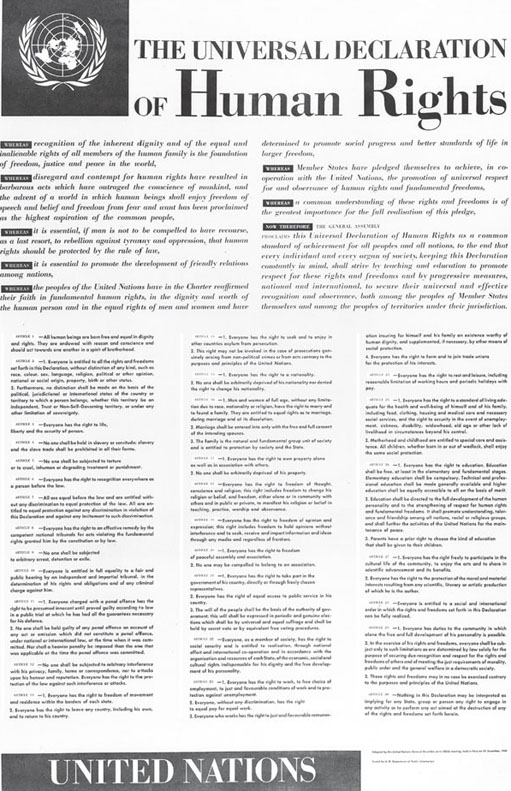2 Part A: The growth of international human rights and humanitarian law
2.1 Treaties, conventions and constitutions
International human rights are part of a much wider area, public international law, which in broad terms encompasses law relating to the legal rights, duties and powers of one nation state in relation to its dealings with other nation states. These rights, duties and powers are set out in international treaties or conventions. Such treaties and conventions may be global in their application or restricted to certain regions of the world. Reference to a work on international human rights treaties would reveal over fifty different treaties, conventions and protocols (instruments which effect an amendment to a treaty or convention).
Box 1: The verdict on public international law
As this course (and the other W100 courses available on OpenLearn: Europe and the law, Judges and the law, Making and using rules) examine rules, rights and justice, it is appropriate to digress for a moment or two to note that there are academic arguments whether there is any such concept as public international law. Individual nation states are supreme in their own law making and there is no such thing as an international legislative body or court that is able to make and enforce laws binding upon every nation state in the world. This inevitably calls into question the status of international agreements and treaties, which are negotiated and agreed between nation states. If there is no system of enforcing or policing such agreements, then what is the purpose in their negotiation? The answer to this question is that there is generally a level of standard to which states adhere in order to achieve acceptance within the world order. Any state falling short of such standards is likely to incur public condemnation either by the United Nations or by other nations whose acceptance and support (financial or political) the particular nation state entreats.
In the late seventeenth century major political, social and economic upheavals saw the emergence of new democracies with written constitutions. Documents such as the American Declaration of Independence and the French Declaration des Droits de l'Homme et du Citoyen began to lay the framework for the recognition of rights such as the freedom of speech and assembly. In these documents the development of modern human international law can be seen. Whilst such documents differed in their detailed content, certain general principles underpinned them:
Every human being has certain rights, which they have by virtue of their humanity.
It is not possible to deprive anyone of those rights.
The rule of law must be recognised. The rule of law requires just laws to be applied consistently, independently, impartially and with just procedure. Laws are regarded as just where they are made in accordance with a fair and democratic procedure.

Such principles are often found in the written constitutions of nation states. The media frequently use the American constitution as an example of a written constitution, but many other countries have such constitutions, for example Australia, Canada, India, Italy and South Africa. The UK has an unwritten constitution – in the UK there is no one source of constitutional rights. It has been argued that this means there is greater flexibility and hence protection of rights in the UK.
This is an argument to which you will return when you consider the incorporation of the European Convention on Human Rights into UK law later in this course.
Each nation state is regarded as sovereign, with complete freedom to deal with its own nationals and territory. There may be a written constitution with rights for citizens or an unwritten constitution where rights are created by trial and custom. International law imposes constraints on nation states. The development of international human rights law has been slow and incremental. To begin with, nation states entered pacts and international agreements concerning trade and boundaries, matters that were in their self-interest and ensured stability and cooperation. Growth of international human rights law was gradual and only emerged in the forms recognised today at the end of the nineteenth century. Since then there has been a huge growth in the recognition of human rights. Numerous treaties and organisations now exist for the protection of such rights. These include regional organisations: European, American, African, Asian and Arab. Core charters include the Universal Declaration of Human Rights, the European Convention on Human Rights, the American Convention on Human Rights and the African Charter of Human and People's Rights. In turn there has been a growth in international courts and tribunals.
